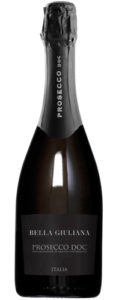Published on May 16th, 2024.
How to Taste Wine and Develop Your Palate
Unleash your inner sommelier
Imagine sitting at a fine dining restaurant, listening to the sommelier’s poetic descriptions of wine: “Hints of cherry and plum dance on the nose,” they say, or “It caresses the palate with a mellow softness.” You take a sniff and think, “I just smell wine.”
But here’s the secret: a trained palate can pick up on these subtleties. The good news? Anyone can train their palate for wine tasting. There’s a world of techniques to explore, and as you delve into them, you’ll be amazed at how your perception of wine evolves.
Here are the four steps to wine tasting:
- Look: Take a moment to visually inspect the wine under neutral lighting. Notice its colour, clarity, and viscosity.
- Smell: Engage your senses by identifying aromas through orthonasal olfaction, which is essentially breathing through your nose. Explore the bouquet and try to discern the various scents.
- Taste: Take a sip and assess the taste structure, noting any sourness, bitterness, or sweetness. Additionally, pay attention to the flavours that come through retronasal olfaction, experienced when breathing with the back of your nose.
- Think/Conclude: Finally, reflect on your experience and develop a complete profile of the wine. Consider its characteristics, complexities, and how it makes you feel. This information can then be stored in your long-term memory for future reference.
How to Taste Wine
Look
Give the wine a swift once-over, noting its colour, opacity, and viscosity, including any “legs.” No need to dwell for more than 5 seconds here. While a wine’s appearance can offer some clues about its nature, unless you’re conducting a blind tasting, you’ll likely find most of the answers you seek on the bottle itself – details like the vintage, ABV, and grape variety.
Smell
Swirling a glass of wine before taking a sniff allows oxygen to mingle with the wine, unlocking its aromas. To execute this technique effectively, ensure the glass isn’t overly full. Rest it on a table, gripping the stem lightly between your thumb, pointer, and middle finger, and gently rotate it in a circular motion. Then, bring the glass to your nose, immersing yourself in its bouquet. For a deeper experience, close your eyes as you inhale, letting the poetry of the wine envelop your senses.
When you’re delving into the aromas of wine, it’s helpful to start with a broad perspective and gradually narrow down your observations. Begin by identifying broad categories of fruits—think citrus, orchard, or tropical fruits for whites, and red, blue, or black fruits for reds. Avoid fixating on specific notes initially, as this can lead to frustration.
Taste
Our taste buds excel at identifying four primary sensations in wine: salty, sour, sweet, and bitter. Sourness, often attributed to grape acidity, varies with factors like climate and grape variety. Some wines, like Pinot Grigio, exhibit a subtle, pleasant bitterness. Occasionally, white wines retain natural sweetness. While salty qualities are rare, they do occur in some reds and whites.
Texture, influenced by alcohol content and tannins, enriches the tasting experience. Higher alcohol content enhances richness, while tannins contribute to texture by providing a tongue-drying sensation in red wines.
Wine tasting involves a journey through distinct phases—beginning, mid-palate, and finish. We refer to this as the ‘length’ of wine. The length offers insights into complexity and quality. How long does it take for the wine to no longer be discernible on your palate?
To refine your palate, practice aspiration—sipping wine while gently inhaling air—to unlock additional flavours and characteristics. Though it may feel unfamiliar initially, this technique reveals subtleties like oakiness and acidity, enriching the tasting experience.
Think
When contemplating your wine experience, it’s helpful to ponder certain questions: Did the wine exhibit balance, or did it veer towards imbalance—perhaps too acidic, alcoholic, or tannic? Take a moment to assess your overall enjoyment of the wine. Did it make a lasting impression, or did it fade from memory? Were there any standout characteristics that caught your attention?
Employ descriptive language to articulate your tasting journey. Similar to professionals at wine tastings, make note of the aromas and flavours you encounter. Whether you’re at home or dining out, this simple practice will gradually refine your ability to discern different aspects of wines, allowing you to discuss them with greater confidence as time goes on.
As you continue your exploration of wines, focus on honing your vocabulary. While there’s no strict right or wrong way to describe wine, certain terms can be misleading. Consider the term “sweet,” often used incorrectly to describe fruitiness or oakiness. Typically, when someone refers to a wine as “sweet,” they’re actually describing it as “fruit-forward,” indicating a juicy character, low acidity, and possibly hints of oak.
Share this article
Click here to receive the latest and greatest promotions, new products, competitions and so much more straight to your inbox.











